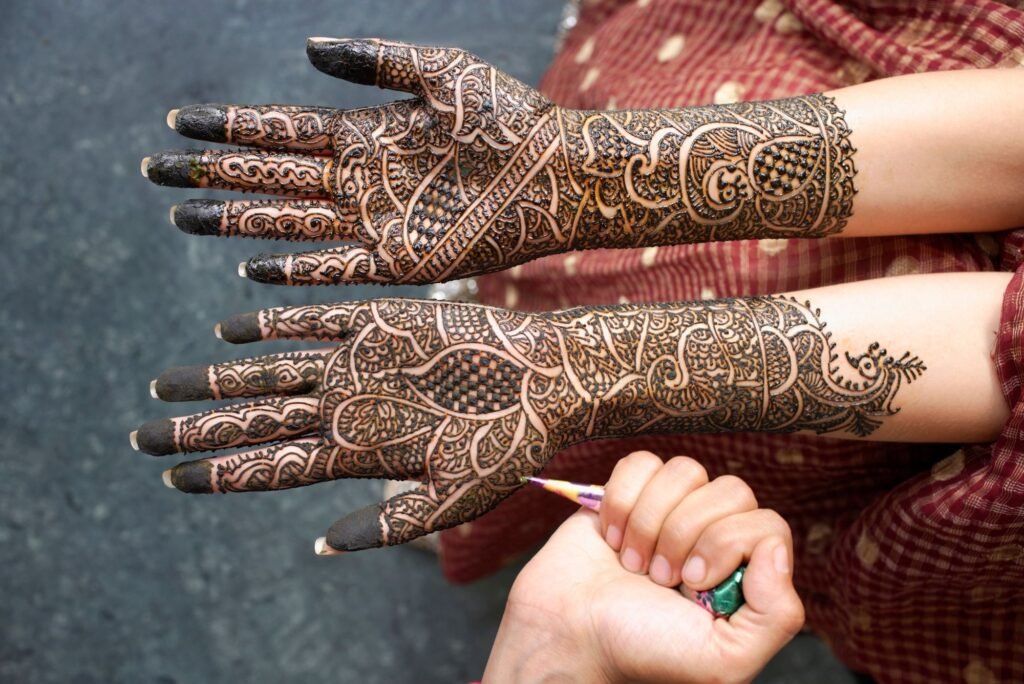Discover the grace of ancient henna designs reimagined for the modern bride. From traditional motifs to personalized patterns, our skilled artists bring your vision to life with intricate detail and precision.

For over 30 years, I have been living my dream as a henna artist, and nothing brings me more joy than creating beautiful designs and sharing this ancient art with others.
Mehndi, also known as mehendi or henna, is a traditional form of body art that has its roots in India, South Asia, and the Middle East. In Indian culture, a Mehndi party is a cherished pre-wedding celebration where the bride’s hands, palms, and feet are adorned with intricate red-orange henna patterns.
Henna itself is a natural dye, and its darkness depends on the freshness of the paste. The depth of color is influenced by the heat of the body and the skin’s porosity. When combined with tannic acid, citric acid, and essential oils, the henna penetrates the skin more effectively, resulting in richer, deeper hues.




Henna, also called mehndi, is a natural dye derived from the leaves of the henna plant, native to regions of South Asia and North Africa. It is widely used to create temporary body art, especially intricate designs on the hands and feet.
Henna has been used for centuries across different cultures as a form of body art, often linked to festive occasions like weddings and festivals. Beyond its decorative appeal, it is also believed to have cooling effects and is utilized in certain traditional healing practices.
Henna has gained worldwide popularity as a form of temporary body art. Applied with a cone or brush, it can last from a few days to several weeks, depending on the quality of the henna and the application technique. People are drawn to the intricate, beautiful designs that can be created, along with the cultural and spiritual meaning it holds for various communities.




Orcinteger faucibus odio cursus facilisi sitenim egestas ele imperdiet etiam situ eltrices vestibulum sit. Orcinteger faucibus odio cursus facilisi sitenim.